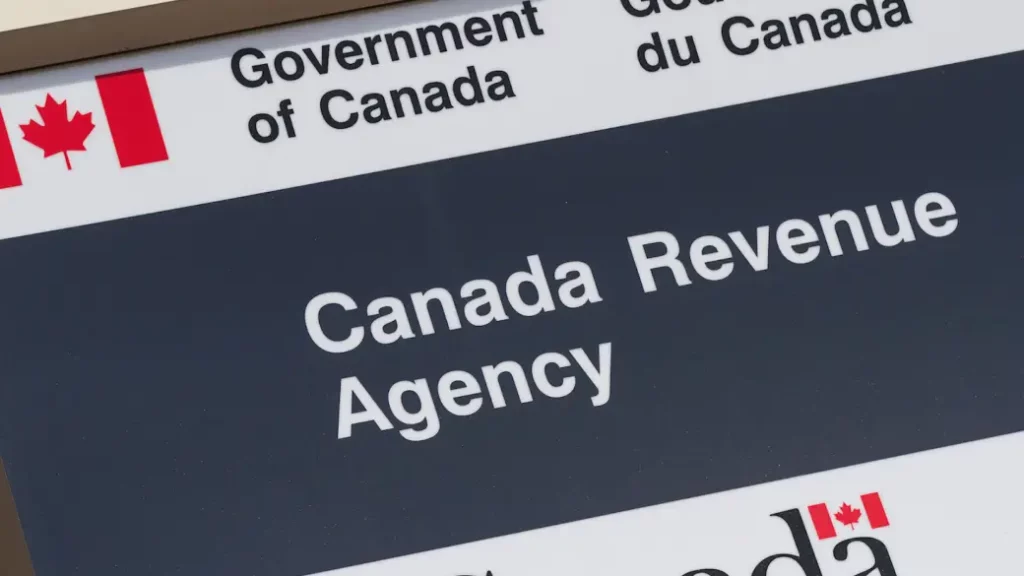How much can you contribute to an HSA in Canada? This is a common question among Canadians navigating the evolving landscape of health and wellness benefits in 2025. With Health Spending Accounts (HSAs) gaining popularity for their tax-efficient benefits, understanding contribution limits is crucial to maximize savings without risking CRA scrutiny.
This article provides a comprehensive guide to HSA contribution caps, differences between employer and sole proprietor limits, and how trusted providers like Wellbytes help you stay compliant while optimizing benefits.
Introduction to HSA Contribution Amounts

As Canadian professionals and entrepreneurs seek smarter ways to manage health expenses, HSAs emerge as a powerful tool to save on taxes. In 2025, these accounts give individuals and businesses the opportunity to reimburse a wide range of medical, dental, and wellness costs tax-free. But just how much can you contribute without crossing CRA‘s boundaries?
The answer hinges on the type of plan—whether it’s for an incorporated or a sole proprietor—and the guidelines set forth for “reasonable” contributions. Striking this balance ensures you maximize benefits without triggering unnecessary audits.
Understanding the contribution limits for HSAs in Canada requires familiarity with CRA’s overarching rules. The focus is on maintaining reasonable contribution amounts rather than hitting fixed caps, which are often misunderstood.
Whether you’re a business owner or self-employed, knowing the nuances about contribution amounts helps you craft a benefit strategy that fits your financial situation while ensuring compliance. Wellbytes specializes in providing flexible, transparent solutions that align with these regulatory standards, helping you avoid the pitfalls of tied selling or arbitrary maximums.
If you’re looking for detailed rules on contribution limits, visit our dedicated guide on HSA Contribution Limits Canada 2025. It offers insights into how CRA interprets reasonable contributions and how you can benefit from tailored HSA plans designed specifically for the 2025 regulatory environment.
What Determines HSA Contribution Limits in Canada?

In Canada, HSA contributions are not defined by strict, fixed caps. Instead, the CRA’s “reasonable” guideline plays a pivotal role. The core principle is that contributions should align with common industry standards and the actual expenses incurred by beneficiaries.
For example, a typical employer might allocate between $2,500 and $15,000 annually per employee, often capped at approximately 25% of the employee’s salary. These figures are well within CRA’s expectations, making them a safe benchmark for question submissions and audits.
The primary variable in contribution limits revolves around the distinction between employer-sponsored and individual plans. Employers tend to set flexible contribution levels for their employees, with plans designed to optimize benefits while maintaining compliance.
Conversely, sole proprietors face stricter, more rigid limits, generally capped at $1,500 for themselves and an additional $1,500 for their dependents. This limitation ensures that the contributions remain aligned with the CRA’s interpretation of industry reasonableness for self-employed individuals.
Wellbytes’ approach ensures that contributions stay within these limits, enabling seamless compliance without being tethered to arbitrary caps seen in some bundled plans offered by competitors such as Olympia Benefits, which sometimes enforce artificially low maximums on contributions.
Comprehending how these limits apply depends not only on legislative standards but also on your specific employment status and health benefit objectives. Careful planning, aided by providers like Wellbytes, can help you determine the appropriate contribution range that maximizes tax savings without risking non-compliance.
Such tailored plans allow businesses and sole proprietors to allocate benefits that reflect their actual needs, all while staying within CRA’s recommended framework that emphasizes reasonableness.
Key Benefits of Optimized HSA Contributions

Maximizing your HSA contributions through optimized planning offers an array of tangible benefits. First and foremost, tax savings stand out. Employer contributions are 100% deductible as business expenses, and employee benefits are received tax-free, creating a win-win situation.
For individuals, such as sole proprietors, contributions directly translate into personal savings—an example being saving around $525 on a $1,500 contribution in a 35% tax bracket, effectively reducing out-of-pocket costs for healthcare. This efficiency enhances overall financial health and encourages well-rounded coverage for medical, dental, and wellness expenses.
Furthermore, avoiding the federal and provincial caps that some providers enforce allows for unparalleled flexibility. Wellbytes’ no-cap HSA plans are specifically designed to adapt to varying needs, making it easier for businesses and self-employed professionals to tailor contributions without falling into the trap of tied selling, which typically restricts plan flexibility at the expense of actual healthcare spending needs.
This approach mitigates issues seen in traditional bundled plans, which often impose strict maximum contributions—sometimes as low as $10,000 or $15,000—limiting growth and taxable benefits. The importance of CRA compliance cannot be overstated; plans aligned with reasonableness and verified through SOC2-certified claim reviews significantly reduce audit risks, giving providers and users peace of mind that their plans adhere to federal standards.
Adopting these flexible, compliant strategies results in a more effective and sustainable health benefit plan. It encourages a culture of wellness within organizations and empowers self-employed Canadians to take control of their healthcare expenses while enjoying meaningful tax advantages.
Properly optimized contributions also help foster long-term financial planning, where health benefits serve as an integral part of overall wealth management, especially with digital tools like Wellbytes’ CRM and mobile app that streamline claims and reporting processes.
Real-World Contribution Examples in Canada

To illustrate the practical application of HSA contribution limits, consider the case of an incorporated professional working in Ontario. Suppose they decide to contribute $10,000 for dental and vision care in 2025.
This amount, when aligned with CRA’s reasonable guidelines, qualifies as an allowable contribution, and the professional can claim it as a tax-deductible expense, reducing taxable income effectively. These contributions are not only compliant but also maximize the benefit of their HSA, allowing greater reimbursement flexibility for health-related expenses.
For a different scenario—a sole proprietor based in British Columbia—the contribution landscape is more constrained but still rewarding. They may contribute $1,500 for themselves and another $1,500 for a spouse, covering prescriptions without triggering CRA’s concern for excessive or unreasonable allocations.
These figures mirror typical self-employed thresholds and provide tax-free benefits relative to healthcare expenditures, all while keeping within prescribed limits. Visualizing these differences in a comparative table can clarify how contribution limits adapt based on employment status, ensuring professionals and entrepreneurs navigate their options confidently.
These examples underscore that tailored contribution strategies—based on employment classification—are crucial for maximizing benefits while maintaining compliance. Consulting a provider like Wellbytes can help identify optimal contribution levels, navigate CRA regulations, and prevent over-contributing, which might provoke audits or penalties. By adopting these real-world models, professionals can better strategize their health benefits for current and future needs.
| Scenario | Contribution Amount | Tax Savings (at 35%) | Comments |
|---|---|---|---|
| Ontario professional | $10,000 | ~$3,500 | Fully deductible, CRA-compliant |
| BC sole proprietor | $1,500 (self) + $1,500 (spouse) | ~$1,050 | Limited but tax-free benefits |
Cost Breakdown and Tax Savings Scenarios

Understanding contribution ranges in concrete terms offers valuable insights into how HSAs can serve as strategic tools for tax savings. For businesses, typical contributions range between $2,500 and $15,000 per employee to maximize benefit without crossing CRA’s reasonableness standards.
For self-employed Canadians or sole proprietors, the maximum contribution remains modest at around $1,500 for themselves and a similar amount for each dependent—often spouses or children. However, the precise amounts can fluctuate depending on individual circumstances and health expense needs.
To visualize potential savings, consider various scenarios. An incorporated employer contributing $10,000 to each employee’s HSA could realize tax deductions worth approximately $3,500 to $5,250 at a 35% marginal tax rate—depending on income level—plus enjoy tax-free reimbursements for beneficiaries.
On the other hand, a sole proprietor who contributes $1,500 on their part and $1,500 for a spouse might see tax savings of roughly $1,050. These figures demonstrate the tangible fiscal benefits of well-planned contributions and highlight the importance of tailoring plans to individual financial situations.
Unlike some providers that impose hidden administrative costs—such as pharmacy fees or mandatory tied selling—Wellbytes offers a transparent, no-fee structure that optimizes cost-effectiveness. This approach not only maximizes savings but also eliminates hidden costs that can erode the benefits of your plan.
For more insights on avoiding these hidden fees, explore our Avoid Hidden HSA Fees Canada. By maintaining financial clarity and flexibility, you can ensure your health plan remains a powerful, tax-efficient asset.
| Scenario | Max Contribution (2025) | Estimated Tax Savings | Additional Notes |
|---|---|---|---|
| Employer per employee | $10,000 – $15,000 | $3,500 – $5,250 | Tax-deductible, compliant |
| Self + Spouse | $3,000 | ~$1,050 | Limited but effective |
Step-by-Step Guide to Setting HSA Contributions
Navigating the process of establishing and funding your HSA in Canada involves several straightforward steps, designed to ensure compliance and maximize tax efficiency.
First, verify your eligibility—whether you’re incorporated or a sole proprietor. This step is crucial because it influences contribution limits and permissible expenses. Sole proprietors, for example, face stricter limits of $1,500 for themselves and similarly for dependents, whereas incorporated organizations enjoy greater flexibility.
Next, calculate what constitutes a “reasonable” contribution based on your income and industry standards. Employers typically limit contributions to no more than 25% of an employee’s salary, while sole proprietors should stick to the $1,500 threshold unless justified by specific medical expenses.
Once you’ve determined your target contribution, select a provider that offers compliant, flexible HSA plans—Wellbytes’ transparent and digital-first offerings are an ideal choice. Avoid tied selling or plans with restrictive maximums, as these can hamper your benefits plan in the long run.
Finally, fund your HSA through your business or personal expenses and submit claims via trusted platforms like Wellbytes’ mobile app. The app streamlines claims submission, tracking, and reporting—providing a seamless user experience.
This entire process helps keep your contributions aligned with CRA’s rules on tied selling, ensuring your wellness benefits remain compliant and efficient. For more detailed guidance, refer to our CRA Rules on Tied Selling HSAs. With careful planning and using the right tools, your health benefits strategy will be both compliant and tax-efficient.
CRA Rules and Compliance for HSA Contributions

The CRA emphasizes that HSA contributions should be “reasonable,” which fundamentally means aligning with what is typical within your industry and expense needs. Contributions exceeding the CRA’s guideline of 90%+ medical expense utilization could jeopardize compliance and trigger audits. Therefore, it’s essential to stay within the suggested contribution range and maintain thorough documentation for all expenses claimed under the HSA.
Understanding the distinctions between employer and employee limits is equally important. Employers have the discretion to set contribution levels that are beneficial and within reason, while employees—whether incorporated or self-employed—must adhere to these limits.
Employees and sole proprietors should be cautious not to over-contribute, as doing so can result in excess arrangements that attract scrutiny. The key is to base contributions on actual healthcare needs, industry standards, and regulations.
For sole proprietors, the contribution cap is limited to $1,500 for themselves and an additional $1,500 per dependent, such as a spouse or children. They must justify these expenditures with receipts and invoices that confirm their medical necessity. Misrepresenting or overestimating expenses may lead to penalties or disallowed claims, further emphasizing the importance of adherence. By choosing providers like Wellbytes, which offers SOC2 security and compliant claim reviews, individuals and businesses can confidently maintain regulatory compliance and enjoy peace of mind.
FAQs
- Q: What is the max HSA contribution in Canada?
- A: There is no fixed cap; contributions are considered reasonable if they align with typical expense ranges, such as $2,500–$15,000 for employees and $1,500 for sole proprietors.
- Q: How do employer vs. employee limits work?
- A: Employers set contribution levels, often based on industry standards, while employees or self-employed individuals must stay within those limits to ensure CRA compliance.
- Q: Can sole proprietors contribute more?
- A: Not beyond the $1,500 for oneself and per dependent limits unless specific medical needs justify higher expenses, which should be carefully documented.
Conclusion
Navigating HSA contribution limits in Canada for 2025 requires understanding the CRA’s emphasis on reasonableness and tailoring plans to individual circumstances. While no fixed maximum exists, staying within guideline ranges—such as $2,500 to $15,000 for employees and $1,500 for self-employed individuals—ensures compliance and maximizes tax benefits.
Providers like Wellbytes facilitate this process with transparent, flexible HSA solutions that avoid restrictive caps or tied selling, giving incorporated professionals and sole proprietors a strategic advantage in healthcare planning. With proper planning, digital tools, and expert guidance, you can optimize your health and wellness benefits while enjoying substantial tax savings.
Ready to maximize your 2025 HSA contributions? Book a free consultation with Wellbytes today to tailor a benefit plan that suits your needs and stays compliant with CRA standards. For further insights on eligible expenses and how to leverage your HSA effectively, visit our comprehensive resource page on HSA Eligible Expenses Canada.
